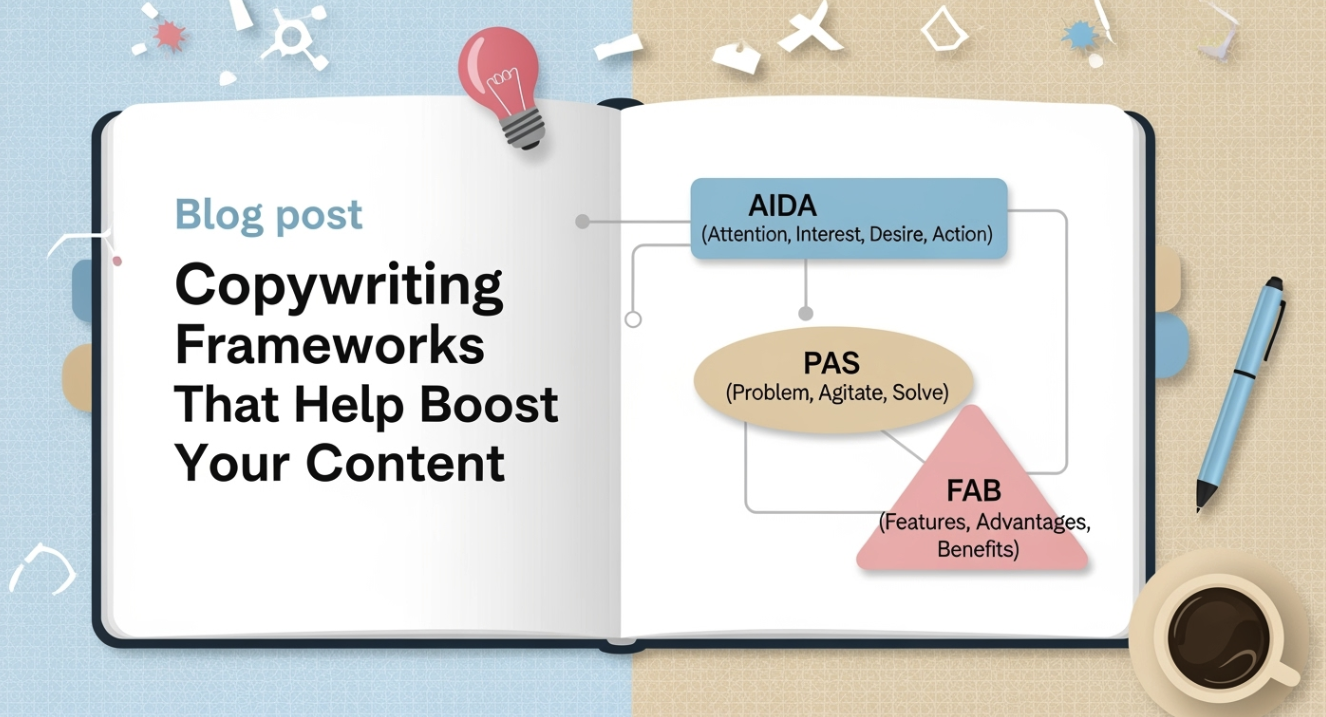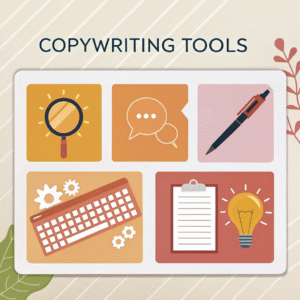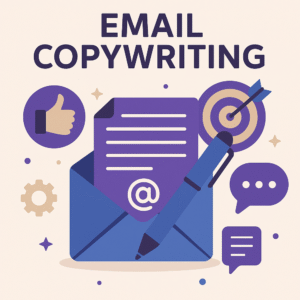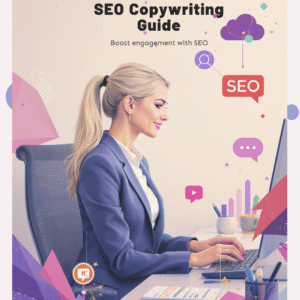
Want to supercharge your copywriting skills and actually connect with your audience? The secret lies in using proven frameworks that make your content shine. Whether you’re writing blog posts, crafting ads, or describing products, structures like AIDA, PAS, and FAB can be total game-changers. Not only do they simplify the writing process, but they also help you craft a message that grabs attention, sparks interest, and inspires action. And let’s get straight to the stats – ads that hook viewers in the first three seconds see a whopping 65% boost in brand recall! By using these frameworks, you can create content that truly resonates with your audience and drives real results.
Companies like Airbnb have successfully used AIDA to highlight benefits, resulting in memorable campaigns that boost engagement. With the right framework, your copywriting becomes a tool for powerful communication.
AIDA: A Classic Copywriting Framework
Understanding AIDA
What is AIDA and why it works
The AIDA framework is one of the most enduring copywriting formulas. It stands for Attention, Interest, Desire, and Action. Developed by E. St. Elmo Lewis in the late 19th century, it was designed to guide advertisers in creating effective ad copy. Over time, this formula has evolved, with marketers refining its application to suit modern content needs.
For example, Arthur Sheldon expanded it in 1911 by adding satisfaction to emphasize repeat customers. Its simplicity and focus on persuasion principles make it a cornerstone of copywriting techniques.
AIDA works because it aligns with how people process information. It starts by grabbing attention with a compelling hook or headline. Then, it builds interest by addressing the audience’s needs or problems. Next, it creates desire by showcasing benefits and emotional appeal. Finally, it drives action with a clear call to action (CTA). This step-by-step approach ensures your copy resonates with readers and motivates them to engage.
The purpose of AIDA in copywriting
The primary goal of AIDA is to guide your audience through a journey. It transforms casual readers into engaged customers. This copywriting formula helps you craft content that not only informs but also persuades. Whether you’re writing ad copy, blog posts, or product descriptions, AIDA ensures your message is structured and impactful. It’s particularly effective for creating attention-grabbing content that converts.
The Four Stages of AIDA
Attention: Capturing your audience’s focus
Attention is the first and most critical step. Without it, your message gets lost. Use bold headlines, striking visuals, or intriguing questions to hook your audience. For instance, Spotify captures attention with trending playlists, while Netflix uses tailored recommendations. These techniques ensure your audience notices your content.
Interest: Building curiosity and engagement
Once you have their attention, you need to maintain it. Provide relevant information that speaks to their needs or pain points. Highlight unique features or solutions your product offers. This stage is about keeping your audience intrigued and engaged.
Desire: Creating an emotional connection
Desire focuses on making your audience want what you’re offering. Use emotional triggers and highlight benefits that resonate with them. For example, Netflix builds desire by showcasing new seasons of popular shows. This stage is where persuasion takes center stage.
Action: Encouraging the next step
The final step is action. Encourage your audience to take a specific step, like signing up, purchasing, or subscribing. A strong CTA is essential here. Amazon excels at this by streamlining its checkout process, making it easy for customers to act.
Practical Applications of AIDA
Using AIDA in blog posts, ads, and emails
AIDA is versatile. In blog posts, use it to structure your introduction and conclusion. For ads, focus on crafting a powerful hook and a clear CTA. Emails benefit from AIDA by starting with an attention-grabbing subject line and ending with a compelling proposition.
Common pitfalls to avoid with AIDA
While AIDA is effective, it’s not without challenges. Skipping any step can weaken your message. Overloading your audience with information in the interest stage can dilute their desire. Additionally, focusing solely on first-time buyers may overlook opportunities for upselling or customer retention.
Always tailor the formula to your audience’s journey.
PAS: A Problem-Solving Copywriting Formula
What Makes PAS Effective
The Problem-Agitate-Solution approach explained
The PAS copywriting formula is a powerful tool for crafting persuasive content. It works by addressing three key stages: identifying a problem, amplifying its emotional impact, and presenting a solution. This structure ensures your audience feels understood and motivated to act.
For example, starting with a relatable problem grabs attention immediately. The agitation phase deepens emotional engagement, making the issue feel urgent.
Finally, offering a clear solution provides relief and inspires trust in your product or service.
Why PAS resonates with audiences
PAS resonates because it taps into human psychology. People naturally seek solutions to their challenges. By highlighting their pain points and frustrations, you create a connection that feels personal. The agitation phase amplifies this connection, fostering trust and loyalty. When you present a solution, your audience feels valued and understood. This approach not only builds engagement but also drives conversions effectively.
Breaking Down PAS
Problem: Identifying your audience’s pain points
Start by pinpointing the specific challenges your audience faces. Use surveys, customer reviews, or competitor analysis to uncover these pain points. For instance, a fitness brand might address the frustration of ineffective workout plans. Highlighting these issues ensures your audience feels seen and heard.
Agitation: Amplifying the urgency of the problem
Once you’ve identified the problem, emphasize its impact. Use vivid language to evoke emotions and stress the consequences of inaction. For example, a fitness brand could say, “Every wasted workout is time you’ll never get back.” This phase deepens the emotional connection and motivates your audience to seek a solution.
Solution: Offering a clear and compelling resolution
Finally, present your product or service as the answer. Focus on how it alleviates the problem and improves your audience’s life. For example, the fitness brand might offer a personalized workout plan, stating, “With AI-powered customization, you’ll achieve your goals faster.”
A strong call to action, like “Sign up today,” ensures your audience takes the next step.
Applying PAS to Your Content
Best practices for using PAS in sales pages and social media
PAS works exceptionally well in sales pages and social media content. On sales pages, use the formula to guide your audience through the problem, agitation, and solution stages. In social media posts, keep your message concise but impactful. Start with a problem-focused headline, agitate with a relatable scenario, and end with a compelling CTA.
How to tailor PAS to your audience’s needs
Tailoring PAS requires a deep understanding of your audience. Conduct research to identify their unique challenges and preferences. Use language and examples that resonate with their experiences. For instance, a meal delivery service might address busy professionals by highlighting the stress of grocery shopping and offering meal kits as a solution. This personalized approach ensures your content feels relevant and persuasive.
FAB: Highlighting Benefits with Copywriting Frameworks
What is FAB?
Features, Advantages, and Benefits explained
The FAB framework focuses on three key elements: features, advantages, and benefits. Features describe what your product or service offers. These are the specific attributes that define its functionality. Advantages explain how these features stand out from competitors. Benefits, on the other hand, highlight why these features matter to your audience. This distinction is crucial in copywriting because benefits often drive purchasing decisions. While features tell your audience what your product is, benefits show them how it improves their lives.
For example, a smartphone’s feature might be a high-resolution camera, but the benefit is capturing memories in stunning detail.
Why FAB is ideal for product-focused content
FAB works exceptionally well for product-focused content because it emphasizes the value proposition. By clearly communicating benefits, you help your audience understand how your product solves their problems or enhances their experiences. This approach resonates with readers and encourages them to take action.
FAB simplifies complex information, making it easier for potential customers to see the value in what you offer.
How FAB Works
Features: What your product or service offers
Features are the foundation of your product. They describe its specifications and functionalities. For instance, a laptop might offer a lightweight design and a long-lasting battery. These details provide essential information about what your product is.
Advantages: How it stands out from competitors
Advantages explain why your product is better than others. They highlight unique selling points that differentiate it in the market. For example, the laptop’s lightweight design might make it more portable than competing models, while its battery life could last twice as long.
Benefits: Why it matters to your audience
Benefits focus on the customer’s experience. They answer the question, “What’s in it for me?” Using the laptop example, the benefit of portability is the ability to work from anywhere comfortably. Highlighting benefits helps your audience see the real value of your product.
Using FAB in Your Content
Tips for crafting product descriptions and case studies
When writing product descriptions, start with features, then explain their advantages, and finish with benefits. This structure ensures your copy is clear and persuasive. In case studies, use FAB to showcase how your product solved a real-world problem. Include specific details to make your content relatable and credible.
How to emphasize benefits that resonate with readers
To emphasize benefits, focus on your audience’s needs and desires. Use language that connects emotionally. For example, instead of saying, “This software automates tasks,” say, “This software saves you hours every week, giving you more time to focus on what matters.” Metrics like engagement rates and inquiries can help measure how well your content resonates.
|
Metric |
Description |
|---|---|
|
Engagement Rates |
Measures how well the content resonates with the audience. |
|
Inquiries |
Tracks the number of potential customers reaching out for more information. |
|
Applications |
Indicates the number of individuals applying as a result of the content. |
|
Enrollment Numbers |
Reflects the final conversion of leads into enrolled students. |
FAB helps you craft copy that not only informs but also persuades. By focusing on benefits, you create a value proposition that drives results.
Copywriting frameworks like AIDA, PAS, and FAB provide a roadmap for creating content that connects with your audience. These frameworks simplify the process by focusing on key elements such as addressing pain points, creating urgency, and offering solutions. For example, PAS helps you craft a compelling narrative by identifying a problem, amplifying its impact, and presenting your product as the solution. Similarly, AIDA ensures your content grabs attention, builds interest, and drives action through a structured approach.
FAQ
What is the best copywriting framework for beginners?
If you’re new to copywriting, start with AIDA. Its step-by-step structure—Attention, Interest, Desire, Action—makes it easy to create engaging content. This framework helps you focus on capturing attention and guiding readers toward a clear action.
Can I combine multiple frameworks in one piece of content?
Yes, combining frameworks like AIDA and PAS can enhance your content. For example, use PAS to highlight a problem and AIDA to guide readers through a solution. Mixing frameworks adds depth and keeps your audience engaged.
How do I know which framework suits my content?
Choose a framework based on your goal. Use AIDA for persuasive ads, PAS for problem-solving content, and FAB for product descriptions. Understanding your audience’s needs will help you select the most effective approach.
Are these frameworks suitable for social media content?
Absolutely! Frameworks like PAS work well for short, impactful posts. Highlight a problem, agitate it, and offer a solution in a concise format. AIDA can also structure engaging captions that drive clicks or actions.
Do these frameworks work for all industries?
Yes, these frameworks are versatile. Whether you’re in tech, fashion, or healthcare, they adapt to your audience’s needs. Focus on tailoring the message to your industry while following the framework’s structure for maximum impact.


